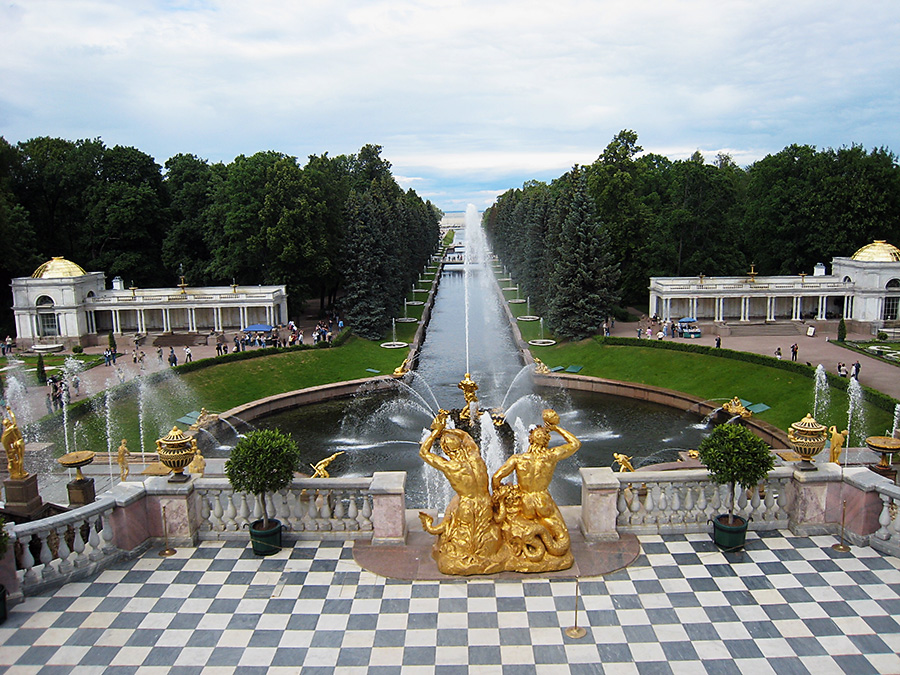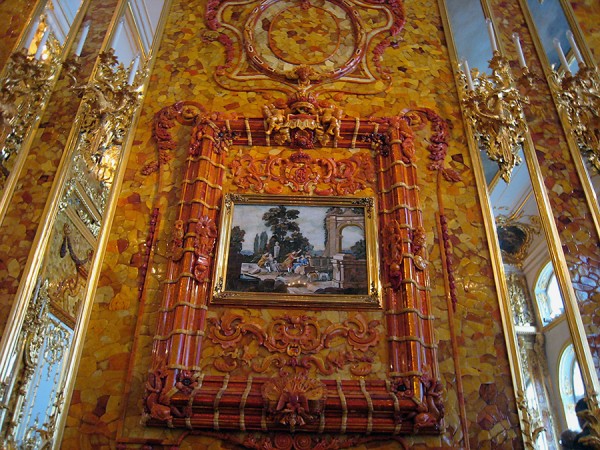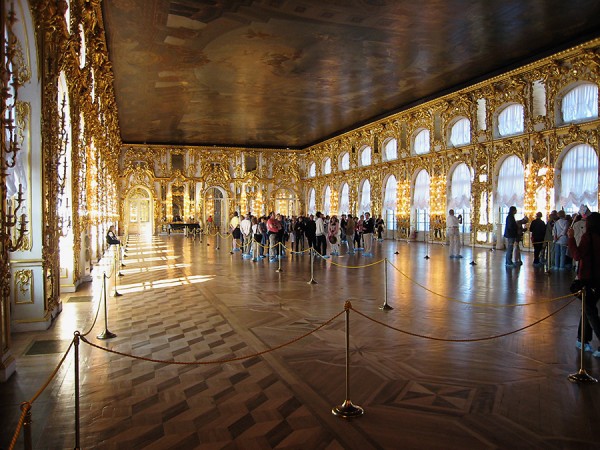Ninety years later, my husband and I sailed into St Petersburg harbor on a luxury ship. Now, I was in Russia and not sure how I felt about it.
On the one hand, I vividly remembered my mother’s sad stories and on the other hand, I was looking forward to visiting my roots and enjoying the art and majesty of Imperial Russia. This was a personal conflict that I would experience during my entire visit.
St. Petersburg was founded by –– you guessed it –– Peter the Great in 1703. He wanted a seaport for commerce, so he invaded Sweden and conquered the land he needed to build a harbor.
Then, from the length and breadth of Russia, he conscripted vast numbers of peasants into forced labor to build his new port city. Tens of thousands of laborers died from cold, hunger, disease and if they were really unlucky, from wolves! Nearly a hundred thousand serfs are buried beneath the city, under palaces, grand avenues and even under the sea. That’s why St. Petersburg is known as the “City of Bones.”
So, every time I looked at this beautiful harbor I thought of the lives sacrificed to the Czar’s megalomania.
Read more: St Petersburg, Paris of the North or City of Bones?
Following the 1914 revolution, the city was renamed Petrograd. Then, a few years later, it was changed again to Leningrad. At the end of the Cold War, Leningrad became St. Petersburg again! What goes around, comes around.
The more I learned about the brutal history of this city, the more anxiety I began to feel. Do they know my parents escaped? There was an irrational part of me that thought, “Will they arrest me?”
In spite of these feelings, one bright morning in May, I placed one foot in front of the other and slowly descended our ship’s gangway and touched the homeland of my parents.
The first thing you do upon leaving the ship is to present your passport to the dour Russian Immigration officers waiting dockside. Now, I always say, “Good morning.” I always smile. Not one smile back. Not one, “Have a nice day.” Not one, “Dobroye utro!” or “Kak dyela?” Nada. Just grim faces, no smiles, no words. They make you feel guilty just for visiting their country. Of course if I lived there I probably wouldn't smile either.
Next, I got on a tour bus. I live in Los Angeles which is renowned for terrible traffic congestion. But, you want bad traffic? Try St Petersburg. For example, if you want the light to change, someone has to pay the policeman manning the lights. Have an accident? Pay the officer to have it towed or moved or anything. It’s what ever a person can pay! It’s called the “Pay-or-you-don’t-go-plan.”
If you can ever get out of this morass, you will experience the magnificence that can be Russia.
We took a hydrofoil to Peterhof Palace. I was stunned by its beauty. Peter the Great decided to build a Palace “befitting to the very highest of monarchs.” He built his own Versailles. Look at the fountains, look at the gilded statues, look, look look. I was dazzled.
Here's more: Peterhof Palace
The next day, we went to the Imperial Palace at Tsarkoe Selo, built in 1752 for Tsarina Elizabeth, who named it Catherine Palace in honor of her mother, Catherine I.
While there, I went to the ladies' room. The anteroom was prettier than the bathroom. I saw the attendant, an old woman in a shabby dress. Her skin was pale and perfect like my mother’s. She had a sweetness about her. I thought, “This could have been my mother.” I gave her all the Russian money I had . She was so grateful, she kissed my hand. I was near tears.
The Amber Room in the palace was considered the 8th wonder of the world until it was stolen or destroyed during WWII. There are many theories as to what happened to the original amber panels. Today, the entire room has been rebuilt by brilliantly talented craftsman in residence at the palace. It’s an absolutely fascinating story which Daniel Brown should tackle. Photography was not permitted, but my husband took a few shots secretly.
Notice the initial 'R' with the crown above. It represents the Romanov dynasty.
A fascinating story: The Amber Room
After the magnificence of the Amber Room, we then were astonished by the opulence of the Grand Hall.
The following day was spent at The Hermitage. I was at a loss for words. The collections are vast beyond comprehension. There were paintings I didn't know even existed and I learned that some of the more contemporary paintings had been seized from their owners for the “benefit of the state.” While I was deeply offended that these paintings had been confiscated, I guiltily reveled in their beauty.
The women guards of the Hermitage.
The story of the Hermitage Museum
Google produced a short "street view" video of The Hermitage Museum as part of their Art Project.
While being immersed in the beauty of Russia, I could take a few steps outside a museum or palace and see street cars from before WWII and huge Soviet-era apartments that looked like drab, grey concrete mountains.
I also became keenly aware that no one smiled. No one. And there were no children in the streets, nor any mothers with strollers.
As they say, it’s a good place to be from.
Did I love visiting Russia? Yes.
But, I always remembered that my mother left Russia with rags on her feet and I left with a flute of champagne on the deck of a luxury liner.
There really was "gold in the streets" of America for my family! God bless America.
If you'd like to read the beginning of this story, see Part One of How My Mother Left Russia with Rags On Her Feet.





























